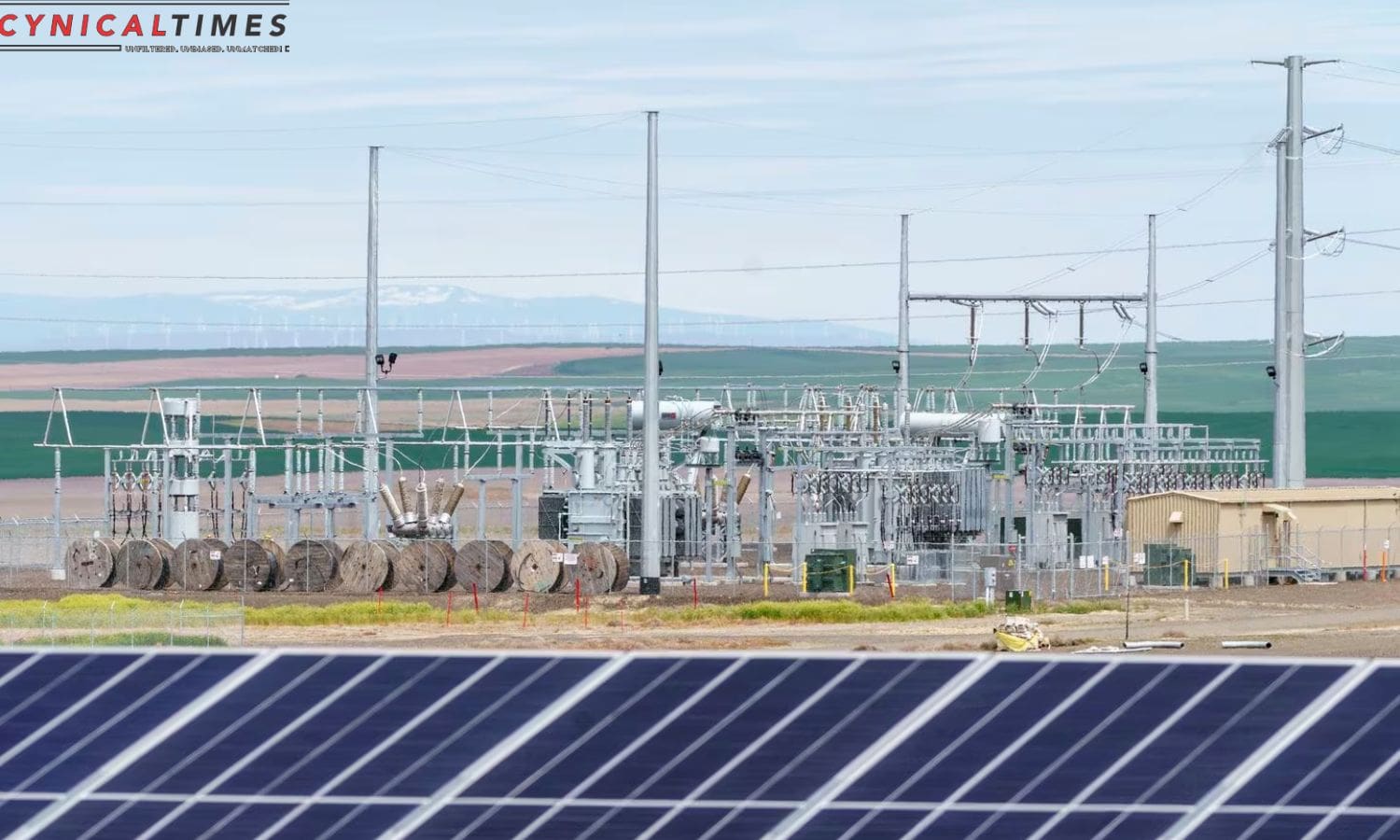Electric Bills on the Rise: Electric bills in Portland are set to rise significantly, as the city faces an 18% rate increase starting in January. This increase, which will impact customers across the board, is a result of various factors such as power supply cost adjustments and stipulated agreements.
In this article, we will provide an analytical breakdown of the customer impact, discuss the future rate landscape, and explore the implications of these changes for residents and businesses in Portland.
Key Takeaways Of Electric Bills on the Rise
- Starting in January, Portland residents will see an 18% increase in their electric bills.
- The rate increase is attributed to factors such as the Faraday Resiliency Project, system enhancements, vegetation management, and inflation.
- Residential customers will experience an average monthly increase of $18, while small commercial/business customers will see a rise in revenues of 14.4% and large commercial/industrial customers will face a 12.5% increase.
- Power supply costs, which are subject to market dynamics, play a significant role in the recent rate increase.


Rate Increase Overview
From January, Portland residents will be facing an 18% rate increase in their electric bills. This significant hike is a result of various factors, including the Faraday Resiliency Project, system enhancements, vegetation management, and inflation.
The Faraday Resiliency Project aims to improve the reliability and resilience of Portland General Electric’s (PGE) electricity distribution system. System enhancements involve upgrading aging infrastructure and implementing new technologies to meet the growing demand for electricity. Vegetation management focuses on maintaining clearances around power lines to prevent outages caused by trees and other vegetation. Lastly, inflation contributes to the overall increase in costs for PGE.
These combined factors have led to the necessity of raising rates to ensure the continued provision of reliable electricity to Portland residents.
Customer Impact Breakdown
The customer impact breakdown reveals the financial implications of the 18% rate increase on Portland residents’ electric bills. For residential customers, this increase means a significant rise in monthly expenses. With an average monthly bill of $100, the rate increase would result in an additional $18 per month, totaling $216 annually.
Small commercial/business customers, on the other hand, will experience an average rise in revenues of 14.4%. This increase will directly impact their bottom line and may require adjustments to their budgets.
Large commercial/industrial customers face an average increase of 12.5%. This could have a substantial impact on their operational costs and may necessitate reevaluation of their energy usage and efficiency measures.
Power Supply Cost Adjustment
Continuing the discussion on the customer impact breakdown, it is important to address the frequency at which power supply costs are adjusted and their impact on the recent 18% rate increase in Portland.
Power supply costs, which account for a significant portion of electricity bills, are subject to adjustment based on various market dynamics. Here are three key points to consider:
- Market Volatility: Fluctuations in fuel prices and demand can lead to sudden increases in power supply costs, directly impacting consumers’ bills.
- Pass-Through Cost: The Public Utility Commission (PUC) implements an annual adjustment mechanism to pass through these power supply cost changes to customers.
- Rate Increase: The recent 18% rate increase in Portland can be attributed, in part, to the rise in power supply costs and the need to cover the increased expenses.
Understanding these factors is crucial in comprehending the reasons behind the rising electric bills in Portland and the challenges faced by both consumers and utilities in maintaining a stable and affordable power supply.


Also Read: California Road Safety Revolution: Speed Cameras Set to Save Lives
Stipulated Agreements and Filings
Stipulated agreements and filings play a crucial role in the regulation and management of electric bills in Portland. These agreements are negotiated between the utility company, such as PGE, and other stakeholders, such as consumer advocacy groups, to establish rates and terms of service.
Filings are then made with the regulatory authority, typically the Oregon Public Utility Commission, to seek approval for these agreements. Stipulated agreements provide a platform for parties to resolve disputes and reach mutually acceptable terms, ensuring transparency and fairness in the rate-setting process.
They also allow for the consideration of various factors, such as costs, investments, and environmental impacts, in determining rates. Through the use of stipulated agreements and filings, Portland can effectively manage and regulate electric bills, striking a balance between the interests of consumers and the utility company.
Future Rate Landscape
As Portland faces an 18% rate increase from January, it is crucial to examine the future rate landscape and its implications for consumers and the utility company.
- Uncertainty: The future rate landscape brings uncertainty for consumers, who may struggle to budget for higher electricity bills. It also poses challenges for the utility company in managing customer expectations and addressing potential backlash.
- Sustainability: The future rate landscape should prioritize sustainability, encouraging the utility company to invest in renewable energy sources and promote energy conservation among consumers.
- Competition: The future rate landscape may increase competition among utility companies, driving innovation and efficiency in the industry. This could benefit consumers by offering more options and potentially lower rates.
Understanding the future rate landscape is essential for both consumers and the utility company to navigate the upcoming changes effectively.


Conclusion Of Electric Bills on the Rise
The 18% rate increase in electric bills facing Portland in January will have a significant impact on customers.
The breakdown of customer impact shows that residential and commercial customers will be affected differently, with some facing a higher increase than others.
The power supply cost adjustment is a key factor contributing to the rate increase. Stipulated agreements and filings are being made to address this issue.
It is important for customers to be aware of the future rate landscape and plan accordingly to manage their expenses.
Our Reader’s Queries
What is the average electric bill in New Jersey 2023?
The average monthly electricity bill varies from state to state. In New Jersey, the average bill is $119.42 for a monthly usage of 682 kWh. Meanwhile, in New Mexico, the average bill is $95.56 for a monthly usage of 559 kWh. New York has the highest average bill at $134.39 for a monthly usage of 892 kWh. North Carolina follows closely behind with an average bill of $158.12 for a monthly usage of 1,072 kWh. These figures highlight the importance of being mindful of energy consumption and finding ways to reduce usage to save on costs.
Did electric rates go up in New Jersey?
In February, the New Jersey Board of Public Utilities released auction results that will result in a slight increase in electricity costs for most residents. According to a press release, the rate increase for this year is 3.3%. As a result, a PSE&G electric bill that was previously $122.39 will now be $126.48, an increase of $4.09.
What runs your electric bill up the most?
Did you know that cooling and heating account for almost half of your household’s energy use? Your water heater and washer and dryer also consume a significant amount of energy, at 14% and 13% respectively. Lighting and your refrigerator follow closely behind, using up 12% and 4% of your energy, respectively. Even your TV, DVD player, and cable box can add up, using 3% of your energy. Consider unplugging these items when not in use to save on your energy bill.
What is the average electric bill in Maine?
Your monthly electric bill is determined by two factors: your electricity usage and your electric rate. In Maine, the typical residential customer pays around $256 per month for electricity. This amount is calculated by multiplying the average monthly consumption of 920 kWh by the average electric rate of 28 cents per kWh.

